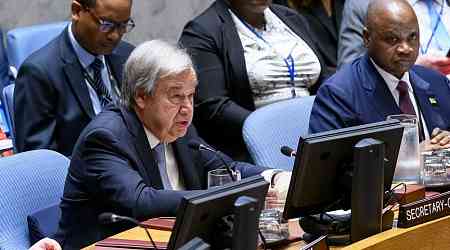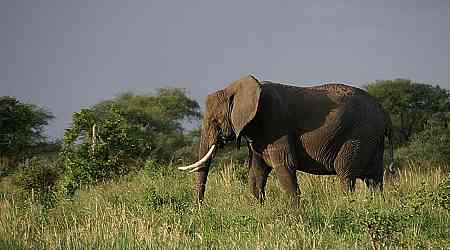Africa contributes only about 4% of the world's greenhouse gas emissions. The continent consumes the least energy for each person, compared with other regions of the world. With over 560 million people who don't have access to electricity, Africa has the lowest rate of energy access in the world.
The continent also has the most rapid population growth and urbanisation rates globally. This means that Africa's greenhouse gas emissions could dramatically increase due to rapid economic growth, urbanisation, industrialisation and population growth.
Our research set out to analyse how Africa's growth could potentially affect efforts to reduce global warming or mitigate climate change. We did this by modelling various scenarios.
We found that the impact of Africa's growth on global carbon targets is likely to be low, especially in the short term. We also found that international institutions based outside Africa could influence the continent's energy transition, and greenhouse gas emissions, by supporting green investments.
We argue that Africa's economies are innovative. The continent has a wealth of natural resources. If investments are made in sustainable development which lead to a "Green New Deal" for Africa, the continent could become a clean and equitable leader at home and for the global community.
How we calculated future emissions
Different combinations of factors produce different emissions scenarios. The factors are:
- population
- economic growth (gross domestic product per capita)
- energy intensity (total energy consumed per unit of gross domestic product)
- carbon intensity (emissions per unit of energy consumed).
We used the well-known Kaya identity, a mathematical tool. It predicts how carbon dioxide emissions might change in African countries, and what could cause this change. The Kaya identity says the total emissions of carbon dioxide from energy use will be equal to population x economic growth x energy intensity x carbon intensity.
Changes in any of the factors in the calculation will change the outcome. For example, the population and economic growth rate might both increase rapidly. Or the population might stay stable but more fossil fuels might be burnt.
Read more: Renewable energy will need more investment, or Africa will stay dependent on fossil fuels
We based our calculations on World Bank and US Energy Information Administration data on the greenhouse gases emitted by Africa between 1990 and 2020. This helped us identify historical patterns. We also used the United Nations' population projections for African countries across all scenarios.
Our work led directly to four scenarios - a potential range for Africa's future carbon emissions in 2030, 2040 and 2050:
Low growth: African countries' economic growth does not speed up. They grow slowly but limit both energy use and carbon dioxide emissions.
High growth: African countries sustain the highest growth rates recorded over the past 30 years for carbon intensity, energy intensity and economic growth. This might happen if significant fossil fuel resources are discovered and then exploited without any efforts to curb related emissions. Several African countries have recently begun exploring their fossil fuel potential, hoping to boost their economic prosperity.
Green growth: This is where African countries grow as rapidly as they have grown over the past 30 years, but do not increase their use of fossil fuels. Kenya, for example, has experienced both economic growth and an expansion of renewable energy capacity.
Mid-growth: This is where countries maintain the average growth rates of the past 30 years for carbon intensity, energy intensity, and economic growth into the next three decades.
What we found
Our findings suggest that explosive growth in Africa's greenhouse gas emissions in the next 30 years is unlikely.
This is because under a low-growth scenario, Africa will reduce emissions.
In the mid- and green-growth scenarios, Africa's emissions would represent only 4%-13% of the planned carbon savings in major economies.
We find that only a high-growth scenario without climate-conscious development will mean that Africa's greenhouse gas emissions grow so much that they negatively affect global efforts to stop climate change. But even this impact would be less than that from China, India and Indonesia until at least 2030.
Recent trends from 2010-2020 show that 26 of the 47 African countries studied are leaning towards low- or green-growth scenarios. This includes the major emitters like South Africa, Egypt and Nigeria.
However, our study also found that low emissions growth in many African countries is primarily due to low economic growth. This means that if economic growth accelerates, emissions will rise - unless carbon and energy intensity trends are addressed via a Green New Deal for Africa. This means that economic development plans must make sure that climate mitigation efforts are front and centre, especially in the 19 African countries which will account for 80%-90% of the region's future emissions.
Read more: Green energy for all: Zimbabwe will need a new social contract to roll out projects like solar power
We also observed that African countries are highly dependent on external actors for their transition to renewable energy. For example, national action plans on climate change in South Africa, Mozambique, Rwanda and Kenya are being developed in response to donor requirements. Egypt's mitigation efforts will only happen if the country gets low interest loans and grants from the international community. Kenya has undertaken to cover 21% of the costs of mitigating climate change, if it receives funding to cover the other 79%.
Similarly, most fossil fuel projects on the continent are owned by companies headquartered in Europe, the United States and China. Foreign multinational corporations own two-thirds of the projected new gas and oil production in Africa to 2050.
These external actors therefore have a strong influence on whether renewable energy adoption will be substantial. Our research suggests that African countries can achieve a green-growth scenario (high economic growth without high greenhouse gas emissions) if international partners commit and follow through with financial and technical support for climate action.
African nations must also make sure that any climate finance aligns with their developmental goals. These include inclusive, community-empowering investments that bring on board the half a billion people without even basic electricity access today. These goals also include expanding local industries - more and more, renewable energy systems should be built and run by local companies and workers, with locally manufactured components.
Daniel M. Kammen, Professor of Energy, University of California, Berkeley
Oluwagbemisola Deborah Akinsipe, PhD Candidate in the Energy and Resources Group, University of California, Berkeley

































